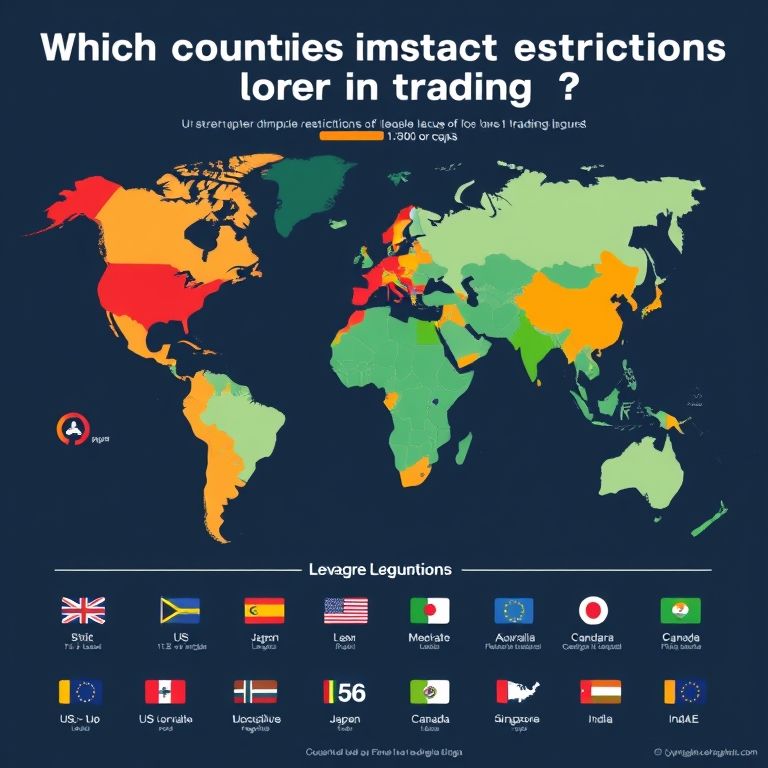Which countries impose restrictions on leverage in trading?
Which Countries Impose Restrictions on Leverage in Trading?
Intro
I’ve learned the hard way that leverage isn’t a magic wand. A midnight trade in a buzzing market might feel thrilling, but regulators weren’t asleep when I started exploring it—nor should they be. Different countries cap how much you can borrow to place a trade, and the rules shift by asset class and venue. The result: a smarter trader learns to read the map—where the leverage caps live, how they apply to forex, stocks, crypto, indices, options, and commodities, and what it means for web3 and DeFi journeys ahead.

Regional landscape and why it matters
Regulators limit leverage to curb reckless bets and protect everyday investors, while still leaving room for legitimate trading strategies. The same broker may offer different margins for different assets, depending on local laws, market liquidity, and consumer protections. The upshot: a trader in one country might enjoy higher leverage on a given asset than a counterpart in another, and the gap can shift with policy changes, especially as markets evolve online.
By region and asset class
- United States: Retail leverage on forex and CFDs is tightly regulated under CFTC/NFA rules. Typical limits hover around conservative margins on forex and futures, and CFDs are largely restricted to regulated venues. The emphasis leans toward risk controls, pattern day trading rules, and strict disclosure. This creates a safer environment for beginners but also nudges traders toward exchange-traded products with clearer margins.
- Europe and UK: ESMA-type regimes and post-Brexit frameworks tend to cap forex leverage for retail traders—commonly around the 30:1 mark for major currency pairs, lower for non-majors, with CFDs similarly restricted. The idea is to temper volatility in crowded markets while preserving access to diversified products like indices or commodities through regulated channels.
- Asia-Pacific: Leverage caps vary widely. Japan, Singapore, Australia, and Hong Kong tend to balance flexibility with investor protection. You’ll see lower caps on some CFDs and more conservative margins on speculative assets, paired with robust disclosure and risk warnings. For crypto and newer products, regulators often push for stricter oversight, clearer custody rules, and enhanced transparency.
- Other markets: Across many regions, the trend is toward harmonizing consumer protections with market access—lower leveraged exposure for retail clients on riskier assets, while professional accounts or institutional clients may access higher margins under due diligence.
Asset-specific takeaways
- Forex: Historically the most leveraged, yet heavily regulated. In many jurisdictions, retail traders face capped margins; professional status or verified accounts may unlock higher thresholds.
- Stocks and indices: Leverage products exist as CFDs and options in some markets, with caps tighter than for futures or actual stock ownership. On regulated exchanges, owning stock outright bypasses leverage fees but requires more capital.
- Crypto: Crypto leverage remains volatile and highly scrutinized. Many regulators treat crypto differently from fiat assets, often imposing stricter risk disclosures and tighter leverage caps, or restricting retail access in certain jurisdictions.
- Commodities and options: Margins reflect underlying volatility. Options can provide defined risk structures, but leverage on commodities and options tends to be careful, with stress-tested margin calls in many markets.
- DeFi and web3 angle: On-chain margin protocols promise permissionless lending and liquidation features, but face oracle risk, liquidity fragility, and evolving regulation. The upside is faster settlement and programmable risk controls; the challenge is security and compliance.
Pros and cons, and practical strategies
- Pros: Leverage can amplify gains, enable access to diversified assets, and support hedging strategies. In well-regulated markets, clear rules and safety nets help you plan risk and avoid catastrophic losses.
- Cons: The downside is outsized losses, rapid margin calls, and regulatory uncertainty—especially in crypto and DeFi where on-chain risks add a new layer of complexity.
- Strategies: start with low leverage and strict risk management, use fixed stop losses, and scale only after proven success. Favor regulated venues, verify capital protection schemes, and use charting tools (TradingView, broker-provided analytics) to anchor decisions. For DeFi, diversify across collateral types, monitor price feeds, and keep private keys secure.
Future directions: DeFi, AI, and smart contract trading
The next wave blends on-chain margin with AI-driven analytics and smart contracts. Expect more programmable risk controls, automated liquidation guards, and cross-asset margin facilities. But watch for regulatory clarity: as authorities tighten supervision, transparency and custodial security will determine which platforms survive and thrive.
Slogans to keep in mind
- Leverage smart, not reckless.
- Know your limits, protect your gains.
- Trade across assets, but regulate your risk.
- Regulation builds trust; AI and smart contracts amplify discipline.
Final note
Which countries impose restrictions on leverage in trading? The answer isn’t a single number but a living map that shifts with policy, asset class, and technology. Stay curious, stay compliant, and use robust tools to navigate this evolving landscape.

